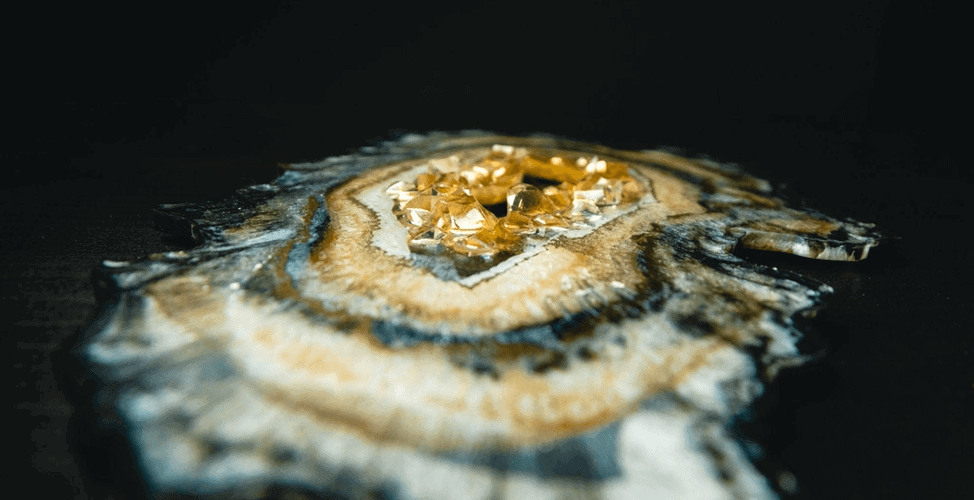Ad Art has evolved in numerous ways in the last 120 years and is not limited to the traditional colors and canvases. Various kinds of materials are used today to […]
Ad

Art has evolved in numerous ways in the last 120 years and is not limited to the traditional colors and canvases. Various kinds of materials are used today to express your artistic side.
Using resin to express yourself artistically has become widely popular in the new-age art community. This unique art style may look difficult, but there is so much you can do with this medium.
So, don’t get intimidated by resin art and give it a try. A few tips can help make this art form easy to express yourself using resin.
What is Resin Art?
The very art in human history was drawn on walls of caves. However, artistic expression has evolved drastically since.
The resin was discovered thousands of years ago. Tree resin is mainly the sap of a tree that is used to create many objects including plastic and gum.
The earliest sign of using resin was found in ancient Egypt and Greece, where it was used to make multiple products from mouth fresheners to creams.
Resin art is mostly made from a type of resin called epoxy resin. This variety was first discovered in the 1930s. Once people figured out that resin could be used to preserve items, they started using it to make visually dynamic art. People also use other types of resin including polyester, silicone, etc.
Resin art is made by combining two substances: resin and hardener. People either combine both with colors, glitter, etc., to make solid art or pour it into an existing art to protect it from wear and tear.
Are you new to resin art? This resin painting tutorial from artincontext.org can help you understand this art form in depth.
Types of Resin Art
Deep Pour Resin
Deep pour is made with a type of resin to create resin art that has a light consistency. This is mostly made by pouring resin into a mold to create a cast. These are often used to make items like jewelry, river tables, etc. Some people encase flowers or small items to make deep-pour resin art.
Surface Pour Resin
People spend thousands of dollars to preserve expensive masterpieces. However, if they had a layer of surface pour resin protecting them, preserving the artwork would cost a lot less.
Surface pour resin is generally poured on a hard surface, which acts as the base of the art. It’s better to coat the surfaces of paintings with resin to make them durable. You can also use it to coat wooden surfaces or decorate anything with a light layer of resin.
Epoxy Resin Art Tips and Tricks
Resin Art Safety
Safety is crucial when making any art, whether rock art or epoxy resin. You are using resin and a chemical hardener to make your resin art. When these are combined, they release fumes that can affect your respiratory system. Only make resin art in a well-ventilated room.
Use a good N95 mask or respirator, especially during the sanding of your resin art. Protect your eyes with goggles, to avoid anything entering your eyes. Use nitrile rubber gloves while you work with epoxy resin to protect your hands.
No Bubbles
Your epoxy resin concoction can bubble after being poured. These bubbles can harden as is and ruin your art. To avoid such occurrences, use a resin that resists bubbles from forming by making it travel to the surface where it will pop. Then, use a heat gun to remove flaws. To prevent bubbles try to pour the resin as close to the surface as possible.
Keep Your Room Warm While Curing
Did you know that heat can make your epoxy resin art dry faster? People often use heat lamps or heaters to lower resin art’s curing time. Once the resin and hardener have been combined, you can keep them in a warm room to dry fast.
The ideal temperature would be between 75 and 85 degrees Fahrenheit. Even though epoxy resin does dry up in humidity, it can make deep pour resin cloudy. It will take about 72 hours to fully harden the resin, however, it might happen faster in a hot and dry environment. If the temperature is cold, it will only lengthen the curing period.
Knowing What Base to Use
As long as you apply a light layer of epoxy resin, you can work on a canvas. However, if it is large and requires a lot of resin, it will pool and cause the canvas to sag. Provide some support for the canvas using cardboard against the frame. You can also use wood panels or fiberboard to use as a base for your resin art. These won’t sag and provide good support.
Tiles are also a great option. Some tiles are cheap, and you can do a lot with them. Old vinyl records are also great for epoxy art, but make sure to cover up the hole before you start working with it.
Try Using Glitter, Confetti, Beads, etc.
Consider using glitter or beads in your epoxy art. You can try mixing a few kinds to create unique and visually pleasing art.
One problem people face is adding glitter after the mixing and having it all sink to the bottom. To deal with this, you have to add the items after 4 to 6 hours of curing. Do not use glitter if you cannot provide a warm room to dry your art, as the cold and glitter is a bad combination for epoxy resin art.
Final Thoughts
Even though resin art might look difficult at first, it is easy and doable. You can make a variety of items using epoxy resin. These tips should help make using resin for artistic expression easier. So, don’t wait and try to create resin art today!
Sponsored post
Support us!
All your donations will be used to pay the magazine’s journalists and to support the ongoing costs of maintaining the site.
Share this post
Interested in co-operating with us?
We are open to co-operation from writers and businesses alike. You can reach us on our email at cooperations@youthtimemag.com/magazine@youthtimemag.com and we will get back to you as quick as we can.









